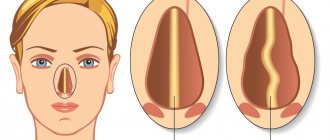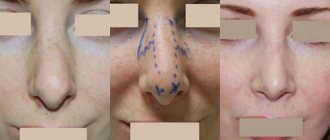The influence of age on operations under anesthesia
Over time, human organs wear out and nothing can be done about it. We are getting old. For some, external signs of aging appear earlier, for others later, but as a rule, everyone experiences the following health problems:
- blurred vision
- weakening of the hearing aid
- decreased functions of the musculoskeletal system
- mental disorders
- absent-mindedness
- memory losses
- insomnia
- interruptions in heart function
- decreased activity
- blood thickening
This is a small list of age-related changes, in fact there are many more of them and each case follows an individual scenario. Each of these points can cause complications after an operation performed under anesthesia. Old people have a hard time coming out of anesthesia, which creates additional risks. If necessary, the doctor will still perform the operation, but only after an extensive examination of the elderly patient’s health.
Indications for general anesthesia
Under general anesthesia in dental practice, it is possible to eliminate almost all problems that arise in the oral cavity - from simple dental caries to complex maxillofacial operations. The patient seeks this type of help, most often, not because of pain, but because of severe fear or medical conditions that interfere with the doctor’s work (allergies, gag reflex, mental illness, etc.). More information about the types of anesthesiological support and how treatment is carried out with switched off consciousness can be found on our website. Here we will talk about the process of postoperative restoration of the patient’s activity , depending on the method of pain relief and the medications administered.
Preparing an elderly person for anesthesia
So that doctors can exclude unfavorable factors during the operation, they prescribe a number of examinations to the patient:
- Standard collection of tests. Specialists laboratory examine the patient's blood, urine and feces. If the test results are poor, doctors first carry out a course of treatment and various measures to prepare for the upcoming operation. If blood counts are poor, iron-rich medications or blood transfusions may be prescribed.
- ECG
- fluorography
- Ultrasound
After collecting the necessary information about the patient’s health, the doctor will be able to calculate the likelihood of negative consequences and prepare for them.
Types of anesthesia for older people
To avoid negative consequences in the postoperative period, a good doctor will choose the most gentle method of anesthesia for an elderly patient. In Russian medicine, 3 main types are used:
- Local anesthesia numbs the local area of skin.
- General anesthesia is used for major surgical interventions that are accompanied by severe pain.
- The person is in a state of sleep during the operation.
- Combined
Only an anesthesiologist, together with a surgeon, can determine the required type of anesthesia. Although specialists often listen to the patient’s wishes. If life is not in danger, doctors will accommodate you halfway.
Epidural anesthesia
Many operations take place while the patient is conscious. For example, operations on the lower extremities, genitals, hernias, and many others. Mainly due to the use of various types of spinal anesthesia, mainly epidural block. In this case, for pain relief you will need several milliliters of the drug, which are injected into the epidural space running along the spinal column. But for several hours, the absence of sensitivity below the level of the catheter is guaranteed.
Childbirth is increasingly taking place under epidural anesthesia. But we must remember that it is not recommended in cases of weak labor, when contractions, on the contrary, have to be stimulated. As for the situation when childbirth proceeds normally, data from many years of research indicate that epidural anesthesia during childbirth is safe and effective.
Today, many people prefer to undergo unpleasant examinations under general anesthesia - gastro- and colonoscopy, various biopsies and punctures. This is really a solution for those who are very afraid of even a little pain and do not want to experience painful minutes. The main thing is that the procedure is carried out under the supervision of an anesthesiologist, who accurately calculates the dosage of the drug and turns off consciousness to the minute. He monitors the patient's breathing and, if necessary, adds a little medicine. If these rules are strictly followed, studies under intravenous general anesthesia are absolutely safe.
How to restore the health of an elderly person after surgery
Of course, an elderly person needs care, especially during the difficult postoperative period. Doctors use all kinds of health checks using special equipment. Be sure to check heart function, blood pressure and other body functions. After the operation, the pensioner is provided with care and the following medical measures are taken:
- procedures for treating sutures with antiseptic agents, as well as regular dressing changes
- taking medications, in particular antibiotics
- correcting electrolyte imbalance
- body temperature control
- emotional support
In fact, all points are simple to implement and require only conscientious implementation.
Possible complications after anesthesia in older people
Old people experience many more postoperative complications than young people. This is quite predictable, because in old age the immune functions of the body decrease noticeably. Senile dementia or dementia is often observed as a complication after recovery from anesthesia. Moreover, the phenomenon can manifest itself long after the operation. At first, such changes may not be noticeable. Sometimes, the first symptoms are recorded only a few months after the use of anesthesia, and periodically, even after several years. Family members cannot always figure it out right away and such things become a very unpleasant surprise for them. The most common complications after anesthesia include:
- Depression that can last for a very long time. In this case, you should pay very close attention to the elder’s internal state. You may need to meet with a psychotherapist.
- A terrible manifestation of postoperative complications is acute psychosis. In this state, the elderly person is captured by delusional ideas. Often the patient can see hallucinations and hear non-existent voices. As a rule, a person does not realize that he is not himself.
- Mental disorders that are activated by outbreaks a short time after surgery. In this case, timely assistance from a psychotherapist can help.
Such interventions, as well as potent drugs, have a negative impact on the health of older people. The nervous system, which is already worn out due to old age, is subjected to serious tests. Irregularities in the heart rhythm may occur, even if the operation was performed on another organ. The health of a pensioner is very fragile and the likelihood of harm is quite high. But on the other hand, if such measures are required, do not rush to refuse. You just need to prepare more carefully.
The number of people over 60 years of age in the Russian Federation in 2016 was 35,986 thousand people. This is 24.6% of the country’s total population, 0.6% more than in 2015. Over the past 10 years, the burden on the working-age population has increased significantly. If in 2006 there were 326.7 pensioners per 1000 people in Russia, then in 2015 there were 411.7. The number of people of working age has increased due to increased life expectancy. It is expected that in 2031 there will be 42,324 thousand pensioners in Russia. This is 28.7% of the total population. The forecast shows that there will be 533.8 pensioners per 1,000 people of working age.
It is well known that, compared with younger patients, people over 60 years of age have a higher risk of developing adverse postoperative outcomes as a result of age-related decline in physiological function, the presence of multiple comorbidities, polypharmacy, cognitive dysfunction, and specific geriatric syndromes such as frailty [1]. Thus, more than 25% of this category of people have several chronic diseases of the cardiovascular, nervous, endocrine, hematopoietic, musculoskeletal, respiratory, digestive systems, etc. [2-4]. In the process of aging, there also occurs a decrease and some distortion of metabolic processes, a decrease in the reactivity of the body [5]. All of the above, along with the volume of surgical intervention, increases the risk of postoperative complications and perioperative mortality [6].
In these clinical recommendations, all information is ranked by level of reliability (evidence) depending on the quantity and quality of studies on this problem (Tables 1, 2).
Table 2. Strength of Recommendations Levels
Table 1. Levels of reliability (evidence)
Preoperative examination
Neuropsychiatric assessment
The incidence of cognitive impairment and dementia in geriatric patients is high. According to global data, the prevalence of non-dementia cognitive impairment among people over 60 years of age varies from 3 to 44% (depending on the method of assessing cognitive dysfunction, the average in European countries is about 25%), and the prevalence of dementia ranges from 1.2 to 8. 5% (in European countries on average - 6.2%), the risk of developing cognitive impairment increases in the presence of diseases of the central nervous system, the frequency of which is higher in elderly patients [7]. Neuropsychiatric assessment is an important part of the evaluation of such patients (Table 3).
Table 3. Neuropsychiatric assessment
For a quick assessment of cognitive status, the use of the Mini-Cog test is recommended, which has high sensitivity and specificity for screening dementia [12, 13].
Decreased cognitive function is a major risk factor for the development of postoperative delirium [14]. Postoperative delirium is a nonspecific cerebral syndrome characterized by simultaneous disturbances of consciousness and attention, perception, thinking, memory, psychomotor behavior, emotions, sleep and wakefulness [15]. The severity of delirium varies from mild to very severe, occurring in up to 50% of geriatric patients [16], so all potential risk factors should be identified and recorded in the medical record.
Identifying depression and dependence on alcohol and neurotropic drugs is an important component of the assessment. To screen for the presence of depression, it is possible to use the PHQ-2 questionnaire, which consists of two questions and is easy to use routinely.
The CAGE screening test is recommended for assessing alcohol dependence [17]. If the result is positive, prevention of withdrawal syndrome is necessary during the perioperative period, including multivitamin therapy (thiamine and folic acid).
Assessment of functional activity
Functional activity characterizes a person’s ability to independently perform self-care activities. Dependency on external care is the strongest predictor of postoperative mortality.
To screen for dependence on assistance, you can ask the patient if he can do the following without assistance:
1. Get out of bed or chair;
2. Get dressed or take a bath;
3. Prepare your own food;
4. Make the necessary purchases.
If the patient answered “no” to at least one of these questions, it is necessary to assess basic and instrumental functional activity using standard scales, such as the Barthel index and the Lawton index. The patient's functional status should be reflected in the medical history, as well as vision and/or hearing loss. A decrease in the level of functional activity may indicate the need for classes with an instructor - a methodologist in physical therapy in the perioperative period and, possibly, an advance discussion of discharge with the possible involvement of a social work specialist.
Fall risk assessment and prevention
All patients should be asked about any falls they have had in the past year. Patients who have had 2 or more falls in the past year, or who have had 1 fall but have mobility or balance problems, are considered to be at high risk for falls. The Stand and Walk test can be used to objectively assess mobility and gait. To perform it, you need a chair with a back without armrests and a measured distance on the floor of 3 m. The time during which the patient gets up from the chair, walks 3 m, turns around, walks back to the chair and sits down on the chair is recorded. If the test takes 15 seconds or more to complete, the patient is at high risk of falls.
Universal measures to prevent falls are relevant for all hospitalized patients and include the following measures:
- familiarize the patient with the environment;
— demonstrate the use of a light call;
— maintain a light call within reach;
- keep personal items within reach;
- use of strong handrails in the bathroom, ward and corridor;
- the hospital bed should be in a low position when the patient is resting; the hospital bed should be raised to a comfortable height when moving the patient;
— the hospital bed brakes must be locked;
— the wheels of the wheelchair must be locked when it is stationary;
- use of non-slip, comfortable, well-fitting shoes;
- use of a night light or additional lighting;
— it is necessary that the floor surfaces are clean and dry; Liquid spills must be cleaned up immediately;
— following safe patient care practices.
It is important that preventing the risk of falls should not prevent early mobilization of the patient in the postoperative period.
For patients with risk factors for falls, a set of measures to prevent them should be developed in the postoperative period (Appendix 6).
Fragility Assessment
Fragility (senile asthenia) is one of the main geriatric syndromes that requires special attention. Frailty is defined as a decrease in physiological reserve in several organ systems, which makes the patient less tolerant of surgical stress, anesthesia, and adverse factors in the postoperative period (Table 4).
Table 4. Assessment of fragility Fragility worsens the perioperative period, but at the moment there is no standardized approach to its assessment [18].
Currently, the most common method for assessing fragility is the Fried test [24]. According to these criteria, signs of fragility include loss of body weight; dynamometrically proven decrease in hand strength (sarcopenia); severe weakness and increased fatigue; reduced movement speed; significant decrease in physical activity. Senile asthenia syndrome is diagnosed in the presence of 3 or more symptoms, but in the case of the presence of 1 or 2 of them, senile preasthenia syndrome occurs.
The pathophysiology of fragility is a matter of debate; most researchers associate its development with inflammation as a result of concomitant diseases. The development of frailty is associated with a combination of immunological and physiological disorders rather than with one specific biomarker. Extensive epidemiological research has linked frailty to several environmental factors, particularly smoking, low levels of physical activity and financial problems. Senile asthenia is unlikely to have a linear, deterministic causal relationship with a specific factor, but rather illustrates a disorder that results from multiple subcellular events that occur secondary to the influence of lifestyle and environmental factors combined with genetic susceptibility.
The prevalence of frailty increases with chronological age until age 95, when virtually all people suffer from frailty and are therefore at risk for poor outcomes. Subjective external assessment, unfortunately, does not reflect all the pathophysiological changes that occur with aging and the development of frailty, which often leads to an underestimation of risk. This circumstance dictates the need to search for an objective assessment of fragility. Ideally, the preoperative assessment should be quick and easy to calculate and predict as accurately as possible the patient's morbidity, mortality, and dependency level after hospital discharge. Although phenotypic scores (FRAIL and Easy Prognostic Score) have been studied and validated in groups of thousands of patients, their clinical utility is not yet entirely clear. Although the Fried criteria are the most widely used today, many older patients have difficulty assessing gait speed and therefore have difficulty assessing frailty.
Assessment of frailty based on physical tests has limited applicability in clinical settings. However, slow gait speed is the strongest predictor among the Fried criteria and the only significant predictor of injury, disability, and mortality. Slow walking speed is most likely a reflection of chronic cardiovascular and neurological diseases.
Although the association between walking speed and frailty is well established, less is known about the association between frailty and aerobic capacity. Maximum aerobic capacity declines by approximately 10% per 10 years from age 20, secondary to reductions in maximum heart rate, ejection fraction, and loss of cardiac muscle mass. However, up to 50% of this decline may be due to comorbidities rather than age-related changes. Cardiopulmonary testing is a well-established stratification tool, especially for complex surgical fields such as heart transplantation. Their effectiveness in other areas, such as vascular surgery, has been questioned. In addition, not all patients can meet the requirements of these tests - 55% of men and 72% of women in the older age group report severe limitations even in basic activities of daily living and/or are unable to climb a flight of stairs. Sarcopenia and cachexia are other changes associated with aging, with poor quality of life and ultimately increasing the likelihood of poor outcome [18]. Unintentional weight loss of more than 4.5 kg or more than 10% of body weight over the previous year should alert the anesthesiologist to the possible presence of cachexia. These two components aggravate the existing fragility. “Prehabilitation” is a relatively new concept that involves training patients preoperatively. Although there are no proven strategies to reverse frailty, exercise (eg, optimal nutrition and education) is of particular therapeutic interest. The exercises are safe and feasible even for very frail people and have beneficial effects on several manifestations of frailty: increasing muscle strength, improving cognitive function. However, despite improvements in physical fitness, the impact on postoperative outcome following such training programs, which include continuous or interval training, remains unclear.
Diagnosis of nutritional deficiency
Determining malnutrition in geriatric patients is an essential part of the preoperative assessment (Table 5).
Table 5. Assessment of nutritional deficiency
Malnutrition increases the risk of postoperative complications - wound infections, pneumonia, urinary tract infections. Height, weight, BMI, albumin levels, and unintentional weight loss in the past 12 months must be documented. A BMI of less than 18.5 kg/m2, a serum albumin level of less than 30 g/L with no apparent cause (no renal or hepatic dysfunction), or weight loss of more than 10-15% in the past 6 months are factors for malnutrition [ thirty]. In this case, the preoperative preparation plan should be adjusted and a specialist in nutritional support should be involved in it. If necessary, elective surgery can be postponed until nutritional status improves.
Cardiovascular risk assessment
Older patients are more susceptible to cardiac complications compared to young patients. Currently, the most effective screening method for assessing the risk of cardiovascular complications is the revised Lee index, which is recommended for preoperative assessment by the European Society of Anesthesiologists (Table 6).
Table 6. Cardiovascular risk assessment
Discriminant analysis shows a predictive value of the scale in predicting cardiac events in all age groups, similar to the original data during the development and evaluation of the scale [32].
Respiratory risk assessment and prevention of pulmonary complications
Geriatric patients are at risk of developing postoperative pulmonary complications (pneumonia, respiratory failure). These complications increase the risk of long-term mortality after surgery. Additionally, advanced age and old age are independent factors for postoperative pneumonia after adjusting for comorbidity indicators. Respiratory risk assessment is an important preoperative step (Table 7).
Table 7. Respiratory risk assessment
The most modern preoperative assessment tool is the postoperative respiratory failure risk score [34].
As mentioned earlier, given the physiological changes in the respiratory system associated with aging, as well as the increase in the number of concomitant diseases with age, elderly and senile patients are at risk of developing pulmonary complications. This situation is aggravated by the addition of other risk factors associated with the surgical intervention itself. The preoperative strategy should be aimed at reducing the risk of postoperative pulmonary complications, including adjustment of therapy for broncho-obstructive diseases, smoking cessation, preoperative determination of pulmonary function, and training in incentive spirometry [12]. Of no less importance is the above-mentioned correction of nutritional deficiency, which is an independent predictor of postoperative pulmonary complications.
It is mandatory to continue the prevention of pulmonary complications in the postoperative period. Prophylactic non-invasive ventilation should be considered in high-risk patients. Early activation, incentive spirometry and breathing exercises are the main measures to reduce the risk of pulmonary complications. It should be noted that adequate postoperative analgesia, as mentioned above, is a necessary condition for the effectiveness of preventive measures.
In addition to interventions designed to optimize respiratory function pre-, intra- and post-operatively, such as respiratory muscle training, minimally traumatic surgical approach, smoking cessation, which can be especially difficult for older patients due to the duration of the habit, there are several postoperative strategies that can be used to prevent pulmonary complications (Table 8).
Table 8. Strategies for preventing pulmonary complications in the postoperative period
Intraoperative management
Correction of pharmacological therapy
Polypharmacy is a significant risk factor for adverse reactions. Polypharmacy refers to taking more than 4 drugs at the same time [35]. Due to a decrease in functional reserves with age, patients' sensitivity to drugs increases, which increases the likelihood of developing side effects. In this regard, geriatric patients require an individual approach to pharmacotherapy (Table 9).
Table 9. Correction of pharmacological therapy
In the preoperative period, a complete list of the patient's medications, including over-the-counter medications, nutritional supplements, vitamins, and herbal medications, should be noted and documented. To analyze the drug list, the updated Beers criteria should be used, as well as the STOPP/START criteria [40]. These drugs, which are associated with a high risk, should be discontinued several days before surgery.
Intraoperative monitoring
According to the Harvard standard, the patient should be under continuous monitoring during anesthesia. In addition to standard parameters, it is recommended to consider monitoring additional parameters, especially during major and emergency operations:
- invasive blood pressure monitoring: currently there is no agreed international definition of arterial hypotension, however, the most accepted is a decrease in systolic blood pressure by more than 30% compared to baseline values. To diagnose, treat, and therefore promptly prevent significant hypotension that may occur during induction of anesthesia in elderly and senile patients, arterial catheterization and invasive blood pressure measurement should be performed before induction. Invasive blood pressure monitoring allows you to record episodes of arterial hypotension between blood pressure measurement intervals in a non-invasive way. It also facilitates the collection of arterial blood for laboratory tests (hemoglobin concentration, glucose level, blood gas composition);
- Central venous pressure (CVP): there is a weak relationship between CVP and circulating blood volume. In patients with reduced ventricular and vascular compliance, the response to infusion load may be significantly weakened, potentially leading to the infusion of excess fluid volumes. Therefore, fluid therapy should be administered with great caution and intermittently to assess response;
- Bispectral index (BIS) or entropy monitoring should be used to determine the depth of anesthesia and sedation. With age, the doses of anesthetics required to induce and maintain general anesthesia and sedation decrease. Failure to adjust the dose can lead to relative overdose of anesthetics and prolonged significant hypotension - arterial hypotension, therefore monitoring the depth of anesthesia in patients at increased risk of adverse postoperative outcomes is recommended under any type of general anesthesia. It should be remembered that low BIS values in combination with arterial hypotension, despite the low concentration of inhalational anesthetic, are associated with longer hospital stay and higher mortality;
- stimulation of peripheral nerves: pharmacokinetic and pharmacodynamic changes in the elderly and senile age can lead to unpredictably prolonged neuromuscular blockade, thus monitoring of neuromuscular conduction is necessary in this category of patients.
Thus, monitoring may have its own characteristics (Table 10).
Table 10. Intraoperative monitoring
Thermometry and prevention of hypothermia
Maintaining normal body temperature is of particular importance for geriatric patients, who are more susceptible to hypothermia in the perioperative period. Hypothermia is associated with adverse outcomes such as postoperative delirium, cardiac dysfunction, longer hospital stay, and poor wound healing. Once hypothermia develops, it is difficult to correct, so measures to maintain temperature should be available throughout the perioperative period. It is necessary to regularly assess body temperature, as well as to carry out forced warming of air and infusion solutions, convection heating of patients, including during transportation, as well as in recovery rooms and intensive care units (Table 11)
Table 11. Thermometry [48].
Dosage adjustment of anesthesia drugs
The choice of dose of anesthesia drugs should be based on age. MAC decreases on average after age 40 by 6% every 10 years for inhaled anesthetics and 7.7% for nitrous oxide. A reduction in the induction dose of propofol by 20% is required, and more time is required both to achieve a sufficient depth of anesthesia and to awaken. Benzodiazepines should be used with greater caution, and a 75% reduction in dosage is recommended. The use of opioids is associated with a high risk of respiratory depression, and dosage reductions and caution during use are required (Table 12).
Table 12. Drug dosage adjustments
Pharmacodynamics and pharmacokinetics change with age, so smaller doses of drugs are usually required to achieve clinical effect. The duration of action of drugs with aging lengthens, as a result of which the dose must be carefully titrated, following the principle of “start with low doses and increase slowly” [52]. Particular attention should be paid to hypnotics: the doses required to induce anesthesia are lower and the onset time is longer [53]. Age-related changes in the pharmacokinetics and pharmacodynamics of all anesthetics make patients more sensitive to relative overdose, which leads to depression of myocardial function, decreased blood pressure and delayed postoperative awakening [54].
Inhalational anesthetics: The minimum alveolar concentration (MAC) required to achieve sufficient depth of anesthesia gradually decreases every 10 years after age 40 by an average of 6% for inhalational anesthetics and 7.7% for nitrous oxide [54]. A similar trend is observed for MAC awakening.
Propofol: compared to young patients, a 20% reduction in induction dose is required, a longer time is required to achieve a sufficient depth of anesthesia, and awakening is delayed [55]. At the same concentration of propofol in the blood plasma, the decrease in blood pressure is much more pronounced [56]. This negative hemodynamic effect of propofol is minimized by slow infusion of the drug.
Midazolam: due to the fact that with age, the clearance of midazolam due to decreased liver function decreases by 30%, elderly and senile patients are significantly more sensitive to this drug than younger ones [57]. In addition, the metabolite of midazolam - hydroxymidazolam - is pharmacologically active, is excreted from the body by the kidneys and can accumulate when their function decreases. Its effect lasts much longer and may potentially contribute to the development of postoperative delirium. Thus, the use of benzodiazepines requires greater caution, which dictates a dose reduction of 75% [58].
Opioids: The main complication of opioid use, the incidence of which increases markedly with age, is respiratory depression [59]. Decreased morphine clearance and the presence of renal failure lead to impaired elimination of morphine glucuronides. This circumstance explains a slight increase in the analgesic effect from the administration of a dose of morphine.
With age, sensitivity to fentanyl increases, which is mainly due to sensitization of brain receptors, and not to changes in the pharmacokinetics of the drug. Fentanyl in older patients exhibits approximately 2 times greater activity, so its safe use requires a dose reduction compared to young patients.
The specifics of the use of dexmedetomidine in geriatrics have not been sufficiently studied. Existing data indicate that there is no effect of age and gender on the pharmacokinetics of this drug.
Thus, a dose reduction of anesthetics ranging from 25 to 75% is required. Propofol and midazolam, which have negative hemodynamic effects in the form of a decrease in blood pressure, exhibit synergism when administered together [60]. Fentanyl, when used as the sole or primary induction agent, does not cause hemodynamic instability but may result in the need for prolonged mechanical ventilation. Studies have shown that opioids in combination with propofol reduce its plasma concentration necessary to achieve a hypnotic effect [61]. Studies involving the combined use of midazolam, propofol and fentanyl demonstrate a synergistic effect of these drugs, which is more pronounced in the older age group [62].
It is known that geriatric patients are more prone to developing arterial hypotension during anesthesia than younger patients [63]. Induction of anesthesia with a bolus of propofol quite often leads to the development of significant hypotension. However, both hypotension and hypertension during general anesthesia are independently associated with adverse outcomes in patients undergoing noncardiac surgery. The consequences of post-induction arterial hypotension are now well known. Thus, D. Reich et al. [64] in their review reported that patients with arterial hypotension were characterized by longer stays in intensive care and hospital. M. Walsh et al. [42] demonstrated that patients with intraoperative arterial hypotension who experienced a decrease in mean blood pressure to 55 mm Hg. and below had an increased risk of acute kidney injury and myocardial injury. Even short periods (1–5 min) of hypotension were associated with an increased risk of these adverse outcomes.
Muscle relaxants: the pharmacodynamics of these drugs does not change significantly with age. In contrast, the pharmacokinetics of muscle relaxants are subject to significant changes. The onset of maximum neuromuscular block can be delayed by 30-60 s. For drugs that are metabolized in the liver and excreted from the body by the kidneys, the effect is significantly prolonged. Neuromuscular transmission time can increase by 50%. In addition, the impact of residual block on the recovery of the pharyngeal reflex may be significant [65]. The drugs of choice in this group of patients are muscle relaxants, the metabolism of which does not depend on liver and kidney function [66]. These criteria are currently met by atracurium besylate and cis-atracurium besylate, which are metabolized by Hoffman elimination regardless of age. The use of sugammadex provides rapid and reliable reversal of neuromuscular block caused by rocuronium bromide, promoting earlier extubation and reducing postoperative respiratory complications [67].
Infusion-transfusion therapy
Correction of water and electrolyte balance in geriatrics is a difficult task due to the presence of pathophysiological changes leading to a decrease in compensatory capabilities for loss of fluid and blood (Table 13).
Table 13. Infusion therapy
To prevent hypovolemia, prolonged preoperative fasting should be avoided; clear liquids may be taken 2 hours before surgery [72]. The complexity of the problem of perioperative infusion therapy lies in the need for constant balancing between the well-known negative effects of uncompensated hypovolemia and the dangers behind hyperinfusion, which are becoming increasingly familiar to a wide range of anesthesiologists and resuscitators, fraught not only with overload of the circulatory system, but also with the development of interstitial edema syndrome. Since today there are no simple, informative and accessible means of monitoring volume levels, we have to rely on clinical recommendations, including those set out in specialized guidelines in recent years:
1. When general anesthesia is used, 200-500 ml of fluid should be infused to counteract the depressive effect of the anesthetics on the cardiovascular system. In case of severe hypotension, the alternative is infusion of a larger volume of fluid, crystalloid up to 500-600 ml, followed by colloid infusion 200-400 ml. If hypotension persists, a vasopressor is administered.
2. When a spinal or epidural block is used, sympathetic blockade is often accompanied by more severe hypotension, which may justify volume loading. A 500-mL crystalloid load probably does not prevent hypotension and decreased cardiac output unless combined with a 500-mL colloid infusion. If crystalloid loading appears to be undesirable for the patient, the most appropriate initial approach to preventing/treating regional blockade-induced hypotension is colloid infusion with a vasopressor.
3. During surgery, infusion of basal fluid requirements should be combined with surgery-specific infusion, which can vary from 2 to 5 ml/kg/h. The procedure-specific requirement arises from the loss of fluid and blood plasma due to the operation. Balanced crystalloids are in most cases an adequate choice to compensate for these losses.
4. The measured/estimated volume of blood loss should be compensated with an iso-oncotic colloid. In the case of using hardware reinfusion of red blood cell suspension, the latter must be combined with a volume of colloid that compensates for the volume of lost plasma. Transfusion of fresh frozen plasma has to be resorted to in cases of massive blood loss.
5. In the postoperative period, it is necessary to continuously record and simultaneously compensate for the volume of pathological losses. At the same time, it is necessary to replenish basal fluid needs. It is also important to determine an individually acceptable hemoglobin level to avoid unnecessary blood transfusions.
As an example, we provide recommendations for infusion therapy during “open” surgery of the gastrointestinal tract.
1. Before and during induction of anesthesia, infuse approximately 500 ml of balanced crystalloid.
2. During surgery, infuse 4 ml/kg/h crystalloid + 4 ml/kg/h colloid.
3. The measured blood loss should be replaced with an equivalent volume of colloid until the predetermined blood transfusion threshold is reached.
4. Postoperatively, provide a basal fluid requirement of 1.5 ml/kg/h and compensate for pathological losses with a combination of colloids and crystalloids.
5. If indicated, compensate for anemia.
It must be taken into account that the term “colloid” most often means a 4% solution of succinylated gelatin, since the use of HES drugs is currently strictly limited to compensation for acute hypovolemia caused by blood loss that is not corrected by crystalloid transfusion. As for dextrans, due to side effects in the foreign literature of the last 15-20 years, it is difficult to find even a mention of the possibility of their use in clinical practice. Transfusion of human albumin solutions without special indications (severe hypoalbuminemia) is not widely used due to high cost.
In the vast majority of cases, during elective surgery, anesthesiologists are faced not with absolute, but with relative hypovolemia, mediated by vasodilation (mainly venules) and the deposition of part of the effective volume of circulating blood due to desympathy during general, regional and combined anesthesia, which ultimately leads to arterial hypotension [73] . A certain contribution to lowering blood pressure is made by drugs for the treatment of coronary heart disease, arrhythmias, chronic heart failure and arterial hypertension, which are widely used in the geriatric population. Since the primary tasks of the anesthesiologist include maintaining organ blood flow and tissue perfusion [74], it is necessary to emphasize the special role of vasopressors - a powerful component of the anesthetic arsenal, a method










